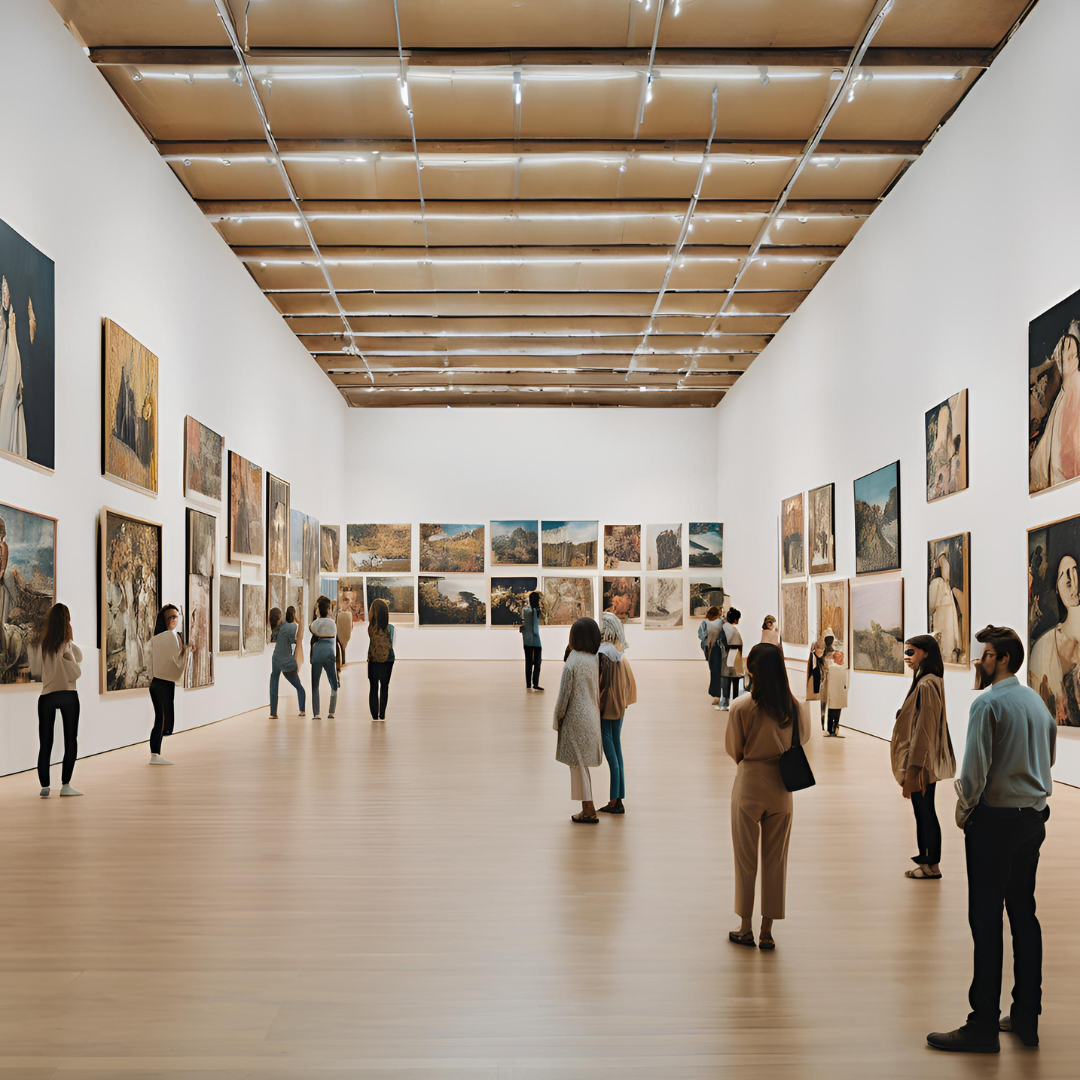As we venture into the mid-2020s, the art market is poised for significant transformation. Fueled by technological advancements, shifting consumer preferences, and a globalized economy, the landscape of art buying and selling is more dynamic than ever. In this blog, we delve into the art market predictions for 2025, exploring the trends, statistics, and innovations that will shape its future.

The Rise of Digital Art and NFTs
Digital art and non-fungible tokens (NFTs) have revolutionized the art world. In 2021, NFT sales skyrocketed, reaching $25 billion, a testament to their growing popularity. By 2025, this trend is expected to continue, with the digital art market predicted to expand at an unprecedented rate. Artists and collectors alike are embracing the unique benefits of NFTs, such as verifiable ownership, scarcity, and the ability to embed royalties.
The growth of the metaverse also plays a significant role in this surge. Virtual galleries and art exhibitions are becoming increasingly common, allowing artists to reach a global audience without the limitations of physical space. As blockchain technology advances, the security and transparency of transactions will further bolster confidence in the digital art market.
Traditional Art Remains Strong
While digital art and NFTs are capturing headlines, traditional art forms are far from being eclipsed. In fact, the market for traditional art continues to thrive. According to the 2022 Art Basel and UBS Art Market Report, global art sales reached $65.1 billion, with fine art accounting for a significant portion of this figure. Collectors still value the tangible connection and historical significance that come with owning physical artworks.
Auction houses like Christie’s and Sotheby’s are experiencing robust sales in traditional art categories, from Old Masters to contemporary pieces. In 2025, we can expect to see a harmonious coexistence between digital and traditional art markets. Hybrid auctions that incorporate both physical and digital lots are likely to become more common, catering to a diverse range of collectors.
The Influence of Technology and Data Analytics
Technology is not only revolutionizing the creation and sale of art but also the way we analyze market trends. Data analytics and artificial intelligence are becoming indispensable tools for galleries, auction houses, and collectors. Predictive analytics can forecast market trends, helping investors make informed decisions. According to a report by Deloitte, the use of data analytics in the art market is expected to grow by 20% annually, highlighting its increasing importance.
Online platforms and marketplaces are also gaining traction, offering greater accessibility to art buyers and sellers. Websites like Artsy and Saatchi Art provide vast collections of artworks, making it easier for collectors to discover new artists and for artists to reach a global audience. The convenience of online transactions and the ability to compare prices and artworks from the comfort of one’s home are significant drivers of this shift.
Sustainability and Ethical Considerations
As environmental and ethical concerns become more prominent, the art market is not immune to these shifts. Sustainability is becoming a key consideration for collectors and artists alike. The use of sustainable materials, ethical sourcing, and eco-friendly practices are gaining traction in the creation of artworks. Collectors are increasingly interested in the provenance of artworks, with a focus on ensuring that their investments align with their values.
Art fairs and galleries are also adapting, with many incorporating green practices into their operations. The 2025 art market will likely see a rise in the popularity of artists and galleries that prioritize sustainability, reflecting broader societal trends.
Emerging Markets and Globalization
Globalization continues to expand the reach of the art market. Emerging markets in Asia, Africa, and Latin America are becoming significant players. China’s art market, in particular, has seen exponential growth, with its share of the global market increasing from 9% in 2018 to 20% in 2021. By 2025, these regions are expected to play an even more substantial role, driven by a growing middle class and increased disposable income.
The democratization of art is also a notable trend. More people than ever have access to art, whether through online platforms, virtual exhibitions, or affordable art fairs. This broadening of the collector base is likely to continue, with art becoming an integral part of more people’s lives.
The art market in 2025 will be a fascinating blend of tradition and innovation. While digital art and NFTs are making significant strides, traditional art forms remain cherished and highly valued. Technology, data analytics, sustainability, and globalization are shaping a more inclusive and dynamic market. As we look to the future, the art market’s evolution promises to offer exciting opportunities for artists, collectors, and investors alike. Stay tuned as we continue to navigate this ever-evolving landscape, where the only constant is change.